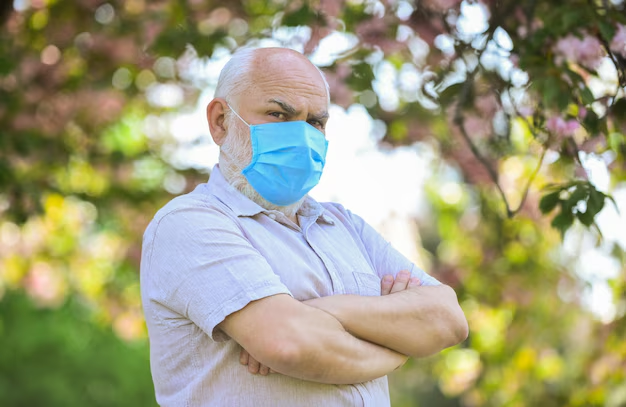Understanding Shingles: Assessing the Risk and Its Impact on Health
When it comes to health concerns, Shingles often sits in a misunderstood category. Many have heard the term but wonder about its real implications. Is Shingles dangerous? This question reflects the uncertainty that surrounds the condition. Let’s explore the nuances of Shingles, covering its causes, symptoms, potential complications, and the broader context of how it may affect your daily life.
What is Shingles?
Shingles, or herpes zoster, is an infection caused by the varicella-zoster virus, the same virus responsible for chickenpox. After recovering from chickenpox, the virus remains dormant in the body, residing in nerve tissue near the spinal cord and brain. Years, or even decades later, it can reactivate, causing Shingles.
How Common is Shingles?
Shingles is relatively common, especially among individuals over 50, though it can affect anyone who has had chickenpox. According to estimates, approximately 1 in 3 people in the United States will develop Shingles at some point in their lifetime.
Identifying Symptoms: When to Suspect Shingles
Early Warning Signs
Before the distinctive rash appears, individuals might experience several early symptoms, such as:
- Itching, tingling, or pain in a specific area on one side of the body
- Fatigue
- Low-grade fever
The Rash and Its Development
Shingles typically presents as a painful rash that appears as a stripe of blisters wrapping around one side of the torso. In some cases, the rash can occur on other body parts, including the face or around the eyes, which requires immediate medical attention.
Key Characteristics of the Rash:
- Begins as red blotches
- Develops into fluid-filled blisters
- Commonly affects just one area of the body
- Blisters leak fluid, then crust over before healing
Is Shingles Dangerous? Unpacking the Risks
Shingles is more than an uncomfortable rash; it can lead to serious complications, particularly in older adults or those with weakened immune systems.
Potential Complications of Shingles
Postherpetic Neuralgia (PHN)
One of the most common complications, Postherpetic Neuralgia, occurs when nerve fibers are damaged, leading to persistent pain even after the rash has healed. This pain can be severe and last for months or even years.
Vision Loss
If Shingles affects the eyes, it can lead to serious eye infections and vision issues, which underscores the importance of seeking prompt medical intervention if the rash appears on or around the eye.
Neurological Problems
Rarely, Shingles can cause inflammation of the brain (encephalitis), facial paralysis, or hearing problems.
Skin Infections
Improperly managed blisters can get infected, leading to further complications.
Who is Most at Risk?
Age Factor
The likelihood of developing Shingles increases with age. The immune system naturally weakens as we age, making people over 50 more susceptible.
Underlying Health Conditions
Individuals with compromised immune systems, such as those with HIV/AIDS or cancer, or those undergoing chemotherapy, are at an increased risk of Shingles and its complications.
History of Chickenpox
Having had chickenpox is a prerequisite for developing Shingles, as the virus remains dormant, awaiting reactivation.
Prevention and Management
Vaccination: A Key Preventative Measure
Vaccines like Shingrix significantly reduce the risk of developing Shingles and its associated complications. It's recommended primarily for older adults and those at higher risk.
Managing Symptoms
While medical advice and prescription treatments are vital, symptom relief includes:
- Keeping rash-covered with sterile bandages
- Wearing loose-fitting, non-irritating clothing
- Using cool compresses to ease discomfort
Seeking Medical Attention
Prompt consultation with healthcare professionals when symptoms appear can mitigate long-term effects and reduce the duration of the outbreak.
Living with Shingles: Daily Life Considerations
Impact on Quality of Life
The pain associated with Shingles can be debilitating, affecting daily activities and quality of life. Timely treatment and proactive management can help maintain a degree of normalcy.
Remaining Informed and Vigilant
Awareness of Shingles' signs and symptoms and taking preventive measures like vaccination can make a significant difference in outcomes.
Emotional and Mental Health
Dealing with a sudden outbreak can be emotionally taxing. Support groups or counseling may benefit those struggling with prolonged episodes.
Closing Thoughts
Understanding Shingles and its potential impact highlights why referring to it as simply a nuisance would be an understatement. Though often overlooked, Shingles carries genuine risks, especially for those over 50 or with compromised immune systems. Knowledge, preparation, and timely medical intervention can significantly alter the course and consequences of the condition.
Shingles at a Glance: Quick Tips and Takeaways 🌟
- Common in Older Adults: Majority of cases occur in people over 50 📅
- Key Symptoms: Painful rash, blistering, and possible fever 🌡️
- Major Risks: Postherpetic neuralgia and vision issues among others 🚨
- Preventative Step: Vaccination recommended for eligible groups 💉
- Prompt Action: Seek medical help at first signs for best outcomes 🩺
- Daily Management: Cool compresses, loose clothing, and rest 🛌
- Emotional Support: Don’t hesitate to seek mental health resources 💬
Being informed empowers you to navigate health challenges with clarity and confidence.
